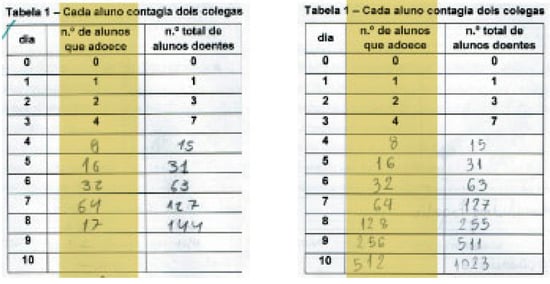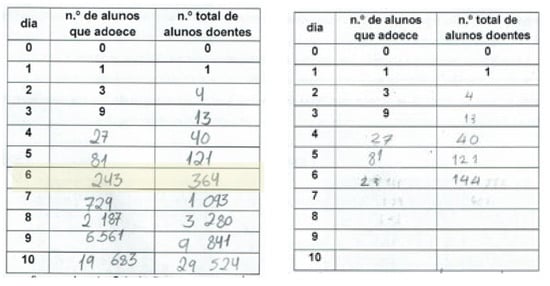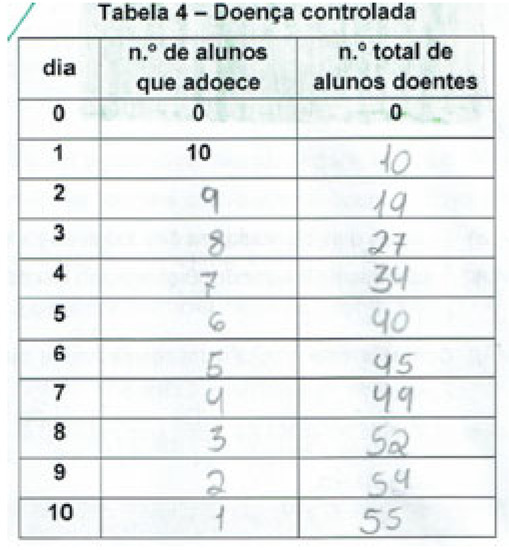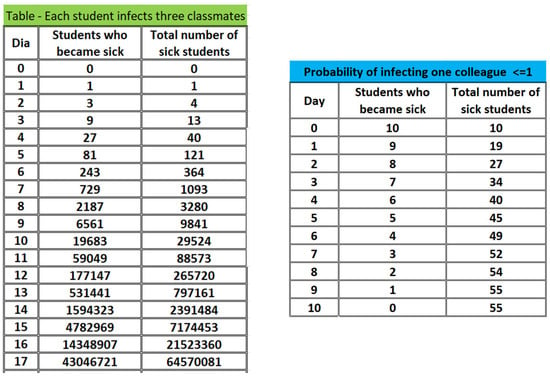The implementation of an integrated approach of STEM (Science, Technology, Engineering and Mathematics) education with real-life scenarios is crucial to motivate students to learn and to better prepare them for real-world challenges, which is a big challenge for teachers. The paper intitled “Teacher professional development in STEM education: an integrated approach with real-world scenarios” aims at highlighting the importance of promoting an integrated approach of STEM education and how to operationalise this approach through a collaborative in-service teachers’ professional development programme. In particular, it gives insights about exclusive online workshops included in the professional development programme that occurred in the context of Covid-19 pandemic. This information can be useful for researchers, educators and other stakeholders interested in developing professional development programmes, namely related to STEM education, including online formats.
- STEM education
- professional development
- COVID-19 pandemic
1. Introduction
2. Teachers’ Perceptions about the PDP
| Question | Type | Main Result | |
|---|---|---|---|
| Q1 | Is the STEM approach proposed in the PDP more motivating for students’ learning? | Likert scale | 13 (100%) for ≥ “High” |
| Q2 | Do you think it is important to obtain training in the areas covered in the PDP? | Likert scale | 13 (100%) for ≥ “High” |
| Q3 | Was attending this PDP useful for your classroom practices? | Likert scale | 12 (92.3%) for ≥ “High” |
| Q4 | Was the online format, with demonstrative videos and interactive sessions to teach how to use the resources proposed through screen sharing in the Zoom platform, adequate? | Likert scale | 12 (92.3%) for ≥ “High” |
| Very Little | Little | More and Less | High | Very High | |
|---|---|---|---|---|---|
| Q1 | 2 (15.4%) | 11 (84.6%) | |||
| Q2 | 1 (7.7%) | 12 (92.3%) | |||
| Q3 | 1 (7.7%) | 2 (15.4%) | 11 (76.9%) | ||
| Q4 | 1 (7.7%) | 3 (23.1%) | 10 (69.2%) |
The theme is too important to update the trainee’s knowledge as a teacher at the 2nd cycle of elementary education, making this PDP a real training opportunity.
(…) the trainee’s initial expectation was that she would certainly enjoy different and innovative experiences, as is typical of the activities promoted by most higher education institutions.(Elisa, Final report, 2021 January)
(…) all contents were fully complied with, the different scheduled workshops were developed in synchronous sessions, via the Zoom platform, and no constraints resulted from this.
There is no question that certain face-to-face experiences would be more fruitful. However, the content approach, in the different sessions, was completely appropriate to the context in which researchers are living.(Elisa, Final report, 2021 January)
3. Teacher Elisa Case Study: Tasks Implemented in Two 6th Grade Classes in the Context of COVID-19 Pandemic
| Tasks | Scenario of Infection | Basic Number of Transmission |
|---|---|---|
| 1 | Each student infects two colleagues | R0 = 2 |
| 2 | Each student infects three colleagues | R0 = 3 |
| 3 | Each student only infects one colleague | R0 = 1 |
| 4 | Probability to infect someone is less than one | R0 < 1 |

| Day | Number of Students Who Gets Sick | Total Number of Sick Students |
|---|---|---|
| 0 | 0 | 0 |
| 1 | 1 | 1 |
| 2 | … | … |
Imagine that each square on a grid (Figure 1) represents a student from a school. One day, which researchers will call day 1, one of the students becomes sick with COVID-19. Represent him, painting a red square on the grid.
Fill in the table, with the information about the “Number of students who gets sick” (Column 2) and the “Total number of sick students” (Column 3). For example, on day one, you write one on both columns.
Let us now assume that each sick student will infect two students on average (To say that it is on average means that it may be that only one person infects one colleague, but there is another that infects three, and therefore, on average, each person infects two colleagues). So, the next day, day 2, there are two more students with COVID-19 who were infected by the first student with this disease; in all, there are already three sick students. Therefore, paint two more squares on the grid, and fill in the table with this information: on day two, two in column two and three in column three.
Again, sick students are isolated at home and no longer infect colleagues. Now, each of these two students is going to infect two other colleagues, and on the third day, there are four more sick students. Therefore, paint four more squares on the grid, and fill in the table with this informatio
- (a)
-
If each of these students now infects two more colleagues, how many new students will be infected on the 4th day?
- (b)
-
And what is the total number of sick students?
- (c)
-
In what day is everyone sick?
- (d)
-
What if the school had 1000 students, after how many days would all students be sick?
- (e)
-
Can you write the numbers of column two in powers of two?
| Day | Number of Students Who Gets Sick | Total Number of Sick Students |
|---|---|---|
| 0 | 0 | 0 |
| 1 | 1 | 1 |
| 2 | 2 | 3 |
| 3 | 4 | 7 |
| 4 | 8 | 15 |
| 5 | 16 | 31 |
| 6 | 32 | 63 |
| 7 | 64 | 127 |
| 8 | 128 | 255 |
| … | … | … |

On the 8th day, only 17 students get sick because in total there are only 144 students and 127 students are already infected, so only 17 students are missing.[Student A]

The double of 64 is 128 and thus only 17 non-infected students are left, so it is not possible to obtain a double of 128, so the remaining ones are infected (17 people).
You can think of a different situation. Imagine that each student infects three colleagues. After how many days are all students sick?
Use the previous procedure to make your observations and record them in Table 1.

At this stage, at least in the 6th B class, a high point of motivation of the students was visible in solving the task. The students were generally and visibly excited because they understood the situation they were experiencing.(Elisa, Final report, 2021 January)
“Now I understand, now I understand everything, this is so fast, contagion, … and researchers are not counting everyone, families are missing and other people who have contact with them!”[Student C]
The student was immediately supported by his colleagues….(Elisa, Final report, 2021 January)
I can conclude that the contagion of the students was faster in this situation, so much that they were all sick on the sixth day, two days earlier than in the past situation.[Student D]
I conclude that if each student infects one more student, then the results would be drastic; for example, on day 5, in Table 1, there are 31 sick students. However, in Table 2, that same day, there would be 121 sick students.[Student E] (Here, Table 1 is on Figure 2, and Table 2 is on Figure 4)
When each student infects three, there are many more infected students, and the growth is much more exponential.[Student F]
Overall, the students realized the dimension of the problem, became more informed about its magnitude, and realized that, in reality, the processes are much worse than in the model studied.(Elisa, Final report, 2021 January)
You certainly understood the evolution scenarios of COVID-19, which you analyzed in the previous tasks. Point out three reasons, of a social nature, for which confinement was necessary.
A person can infect more than one person and the disease will spread more easily. If everyone gets infected, doctors cannot treat everyone. Researchers were confined to allow time for the vaccine to be made.
Confinement is important for the virus to infect fewer people in order not to infect more people. If researchers become contaminated, hospitals will be full. If researchers are confined, scientists will have more time to produce the vaccine.
The reason was because if researchers continued to live together, COVID would spread and the hospitals would be full, and they would not be able to treat everyone.
Prevent the disease from spreading further. Prevent further deaths. Hospitals would run out of beds.
Confinement is important to ensure social distance, that is, it avoids physical contact through kissing, hugging or even the simple touch and thus researchers control the spread of the virus. On the other hand, the fact that researchers are confined will greatly reduce large clusters of people, whether at work, in transport or in social gatherings.
In this task, the students reflected on the objectives pursued with confinement and social isolation as well as all the other rules that are suggested for the control of the pandemic.
To keep the situation under control, the likelihood of infecting someone must be less than one.
What does it mean “less likely to infect someone less than one”? After all, researchers cannot infect only half a person… You must think about the average again. It means, for example, that if there are ten sick people, they will infect less than ten other people, that is, every day the number of people who get sick is less than the number of people who got sick the day before.
Do the following experiment and proceed to the records in Table 4: it assumes that the probability of contagion remains always less than one and that, each day, the number of students who become ill is equal to the number of students who became ill the day before one less. Suppose that on the first day there are 10 sick students.
After how many days are there no students getting sick? (…) How many students became ill? (…)

There are no students falling ill after 11 days.
55 students became ill.
In this task, the students contacted with the term “probability” which became a concept of the 3rd cycle of elementary education.
Most students understood the situation in question. “Teacher, when will this happen”?

To complete the task around Dr. Providência’s article [25], students completed a text of gaps mobilizing knowledge on the topic “Microorganisms” that were the target of exploration, in the Natural Sciences classes and evaluated in tests and where some weaknesses had been seen. In this way, it functioned as a moment of knowledge recovery/consolidation.(Elisa, Final report, 2021 January)

COVID-19 is a disease caused by a virus called Sars-CoV-2. In order to reproduce, it needs to infect a host cell. The details of this microorganism were only possible to know, thanks to a device that physicists developed to see the infinitely small, called an electron microscope.
| Science | Technology | Engineering | Mathematics |
|---|---|---|---|
| Natural Sciences Microorganisms Disease spread Pandemic |
Computer Internet Wikipedia Power Point Excel. |
Planning, designing and performing the activities. | Powers Exponential growth Mathematical model Variable Iteration Functions Graphics Organization of tables and data visualization. |
The trainee considers that the frequency of this training, from now on, will have implications for the preparation of her classes. She will seek to intensify her teaching practice with experiences that require the mobilization of different areas of knowledge and will lead her students to a better articulation of knowledge, promoting as much as possible the development of the ability to reason, communicate and defend points of view in all students.(Elisa, Final report, January 2021)
The trainee feels quite satisfied with the work she developed, firstly, because she realized that her students were very motivated, that they adhered to the proposed tasks, there was even an unusual frenzy, especially in class B and some students verbalized that the task allowed them to understand the frightening spread of the virus that plagues us.
It should be noted that the trainee at the time of application of the activity had already taught the content of “Microorganisms” and obviously had contextualized and integrated the whole problem of the pandemic, but it was with the activity “When will everyone be sick?” that students understood the reason for the rules to which researchers are/are subject to limit the spread of the disease.
On the other hand, the interdisciplinary aspect of the task allowed the articulation of the disciplines of Natural Sciences, Mathematics and Information and Communication Technologies and, thus, to participate in the Domain of Curricular Autonomy and Flexibility, as well as in the School Project.
In today’s world, full of complex challenges, the development and integration of multiple literacies, inspired by real situations, will certainly allow for more meaningful learning in which talent, individual qualification, the scientific system and democratic citizenship are strengthened. researchers are grateful for the opportunity, and researchers await other formative moments of undeniable value.
4. Discussion and conclusions
Although some teachers mentioned their preference for face-to-face workshops, they also recognized the relevance of the online format, where the hands-on experiments were exemplified through videos and live sessions with the teachers. In addition, they referred that the programme corresponded and exceeded their expectations concerning its structure, contents, creativity, collaboration, innovation, and improvement in teachers’ practices. Moreover, teachers revealed interest, enthusiasm and motivation regarding the contents provided in the workshops of the PDP and referred that they gained new knowledge that will have impact in their practices. Furthermore, they mentioned that promoting interdisciplinarity with several subject matters and resorting to real-world scenarios is more motivating to students and contributes to promote their interest to learn. This is in line with the literature that recommends that this approach improves students significative learning and consequently their learning achievement. These Teachers’ beliefs and perceptions are important because, as referred by Margot and Kettler (2019), they will influence teachers STEM instruction.
Therefore, an exclusive online PDP can provide teachers with knowledge, and also can engage and motivate them to innovate their practices as required in an effective PDP (Darling-Hammond et al., 2017). Moreover, several teachers, who participated in this study, developed interdisciplinary tasks related to STEM contents and implemented them in class. Because of the current scenario of Covid-19 pandemic, teacher Elisa case study was chosen to exemplify the implementation of STEM integrated tasks based on a real-world scenario. It was verified that she did develop STEM practices within an authentic context for the purpose of connecting these subjects to enhance student learning as stated by Kelley and Knowles (2016). In fact, she used the real scenario of COVID_19 pandemic with the aim of introducing tasks with meaning for her students and related to the curricula of Natural Sciences, Mathematics, and Information and Communication Technologies. Moreover, the teacher achieved one of her initial objectives, which was to make students understand the dissemination of the decease and to be aware of the need for measures to face the pandemic. Furthermore, Elisa recognized that it was based on this approach that students finally understood the problematic of exponential grow of infection and the impact on real life, and consequently the need for isolation or vaccination measures. Also, she identified critical thinking skills and significative learning because of this initiative. Her conclusion is in line with Stohlmann et al. (2012), who states that a strategic approach of STEM education provides students with higher levels of critical thinking skills, improves problem solving skills, and also increases learning retention. Moreover, relevant interdisciplinary learning environments were provided as recommended by some authors (Beswick & Fraser, 2019; Geiger, 2019). In fact, Elisa highlights the interdisciplinary tasks she implemented in class and the importance of implementing this approach with real life scenarios that provides students with meaningful learning and better prepares them to the real-world challenges. In summary, teacher Elisa case study exemplifies the implementation of interdisciplinary tasks related to STEM (Table 10), with relevant real-world problems, such as the COVID-19 pandemic, as recommended in the literature (Kelley & Knowles, 2016).
Furthermore, based on Aguilera et al. (2021) and Vasquez et al. (2013) theoretical framework for STEM education, tasks developed by Elisa are between the second and third level. In fact, the learning goals transcend the individual disciplines, are curriculum oriented (interdisciplinary) and, also, focus on a real-world problem and are oriented towards social implications (transdisciplinary). Indeed, the real real-world problem of COVID-19 pandemic, caused by coronavirus SARS-COV-2, was approached, in order to make students understand the phenomena, namely several scenarios of infection. In addition, social implications were discussed such as the need for measures to prevent or minimize the problem. Elisa was able to prepare and implement STEM tasks highlighting the role of mathematics for her students to understand this problem, which was successful, because it was based on these tasks that students finally understood the pandemic, which did not happen before when the subject was approached in the science class. Therefore, it was the STEM approach that promoted meaningful learning in students.
Based on this research, it was verified that it is possible to operationalize an exclusive online PDP in STEM education that motivates teachers and improves their knowledge and skills to implement STEM hands-on practices in class. In addition, teachers recognize the importance of resorting to relevant real-world scenarios because it increases students’ motivation to learn. Finally, teacher Elisa case study exemplifies a strategy to implement integrated STEM hands-on tasks in class, based on real-world scenarios, as is the case of COVID-19 pandemic, which is an approach that promotes students’ meaningful learning.
Regarding the limitations of this study, more research needs to be provided about the efficacy of online PDP formats regarding hands-on STEM education approach, namely in other levels of school such as secondary school.This entry is adapted from the peer-reviewed paper 10.3390/math10213944
References
- Murphy, S.; MacDonald, A.; Danaia, L.; Wang, C. An analysis of Australian STEM education strategies. Policy Futures Educ. 2019, 17, 122–139.
- Roehrig, G.H.; Dare, E.A.; Ring-Whalen, E.; Wieselmann, J.R. Understanding coherence and integration in integrated STEM curriculum. Int. J. STEM Educ. 2021, 8, 1–21.
- English, L.D. Advancing Elementary and Middle School STEM Education. Int. J. Sci. Math. Educ. 2017, 15, 5–24.
- European Schoolnet. Science, Technology, Engineering and Mathematics Education Policies in Europe. Scientix Observatory Report. October 2018; European Schoolnet: Brussels, Belgium, 2018.
- Office of the Chief Scientist. Australia’s STEM Workforce: Science Technology, Engineering And Mathematics; Commonwealth of Australian: Canberra, Australia, 2016.
- Kennedy, T.J.; Odell, M.R.L. Engaging students in STEM education. Sci. Educ. Int. 2014, 25, 246–258.
- Kim, D.; Bolger, M. Analysis of Korean elementary pre-service teachers’ changing attitudes about integrated STEAM pedagogy through developing lesson plans. Int. J. Sci. Math. Educ. 2017, 15, 587–605.
- Aguilera, D.; Lupiáñez, J.L.; Vílchez-González, J.M.; Perales-Palacios, F.J. In search of a long-awaited consensus on disciplinary integration in STEM education. Mathematics 2021, 9, 597.
- Anderson, J.; Li, Y. (Eds.) Promoting integrated STEM tasks in the framework of teachers’ professional development in Portugal. In Integrated Approaches to STEM Education. Advances in STEM Education; Springer: Cham, Switzerland, 2020; pp. 511–532.
- Li, Y.; Wang, K.; Xiao, Y.; Froyd, J.E. Research and trends in STEM education: A systematic review of journal publications. Int. J. STEM Educ. 2020, 7, 1–16.
- Thibaut, L.; Ceuppens, S.; De Loof, H.; De Meester, J.; Goovaerts, L.; Struyf, A.; Jelle, B.P.; Wim, D.; Johan, D.; de Cock, M.; et al. Integrated STEM education: A systematic review of instructional practices in secondary education. Eur. J. STEM Educ. 2018, 3, 2.
- Vasquez, J.A.; Sneider, C.I.; Comer, M.W. STEM Lesson Essentials, Grades 3–8: Integrating science, Technology, Engineering, and Mathematics; Heinemann: Portsmouth, NH, USA, 2013; pp. 58–76.
- Ministério da Educação e Ciência. Aprendizagens Essenciais de Matemática—7.° Ano; República Portuguesa: Lisbon, Portugal, 2018.
- Ministério da Educação/Direção-Geral da Educação. Perfil dos Alunos à Saída da Escolaridade Obrigatória; República Portuguesa: Lisbon, Portugal, 2017.
- Kelley, T.R.; Knowles, J.G. A conceptual framework for integrated STEM education. Int. J. STEM Educ. 2016, 3, 11.
- Aravind, T.S. Online Education During COVID-19 Lockdown Period in MBA Colleges: An Analytical Study Conducted in Kochi. Indian J. Comput. Sci. 2021, 6, 8–17.
- Brouwer, E.; Raimondi, D.; Moreau, Y. Modeling the COVID-19 outbreaks and the effectiveness of the containment measures adopted across countries. MedRxiv 2020.
- OECD. Back to the Future of Education: Four OECD Scenarios for Schooling, Educational Research and Innovation; OECD. Publishing: Paris, France, 2020.
- Bozkurt, A.; Sharma, R.C. Emergency remote teaching in a time of global crisis due to CoronaVirus pandemic. Asian J. Distance Educ. 2020, 15, i–vi.
- Mishra, L.; Gupta, T.; Shree, A. Online teaching-learning in higher education during lockdown period of COVID-19 pandemic. Int. J. Educ. Res. Open 2020, 1, 100012.
- Luo, R.; Delaunay-Moisan, A.; Timmis, K.; Danchin, A. SARS-CoV-2 biology and variants: Anticipation of viral evolution and what needs to be done. Environ. Microbiol. 2021, 23, 2339–2363.
- Walker, W.; Moore, T.; Guzey, S.; Sorge, B. Frameworks to develop integrated STEM curricula. K-12 STEM Educ. 2018, 4, 331–339.
- Margot, K.C.; Kettler, T. Teachers’ perception of STEM integration and education: A systematic literature review. Int. J. STEM Educ. 2019, 6, 1–16.
- Stohlmann, M.; Moore, T.J.; Roehrig, G.H. Considerations for teaching integrated STEM education. J. Pre-Coll. Eng. Educ. Res. (J-PEER) 2012, 2, 4.
- Providência, C. Quando estarão todos doentes? Gaz. Da Física: Vamos Exp. 2020, 43, 37–39.
